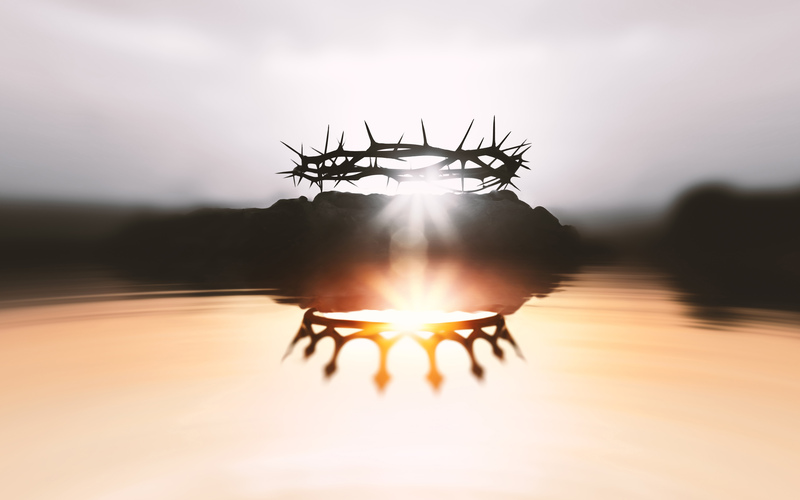Jesus' Death and Resurrection
Sign up for a six month free
trial of The Stand Magazine!
How do we know that Jesus really rose from the dead? And on what day was He crucified? These are questions that our ministry is frequently asked, especially around this time of year.
Obviously, there was then no ability to broadcast live video of the resurrection of Jesus exiting the tomb. Instead, people used the evidence of eyewitnesses to prove matters in a court of law and for other important areas of life. The evidence for the resurrection is based on the testimonies of more than 500 people who said they saw Jesus alive again, including multiple locations over a 40-day period.
First Corinthians 15:5-8 offers a list of many of the eyewitnesses of the resurrected Jesus. Paul wrote, “He was seen by Cephas, then by the twelve. After that He was seen by over five hundred brethren at once, of whom the greater part remain to the present, but some have fallen asleep. After that He was seen by James, then by all the apostles. Then last of all He was seen by me also, as by one born out of due time.”
Paul noted that most of these eyewitnesses were still alive over 20 years after the resurrection when he wrote his letter. The claim offered a strong basis of evidence that would have otherwise been easily dismissed among his readers.
The list of eyewitnesses also included both people friendly and unfriendly to the resurrection. In other words, those who followed Jesus might be tempted to make up the story, but those who did not believe He was the Messiah would not have done so. The fact that James, the half-brother of Jesus who doubted Him, was among those who saw Him alive again shows the diversity of eyewitnesses. Another half-brother, Jude, was also a follower of Jesus and wrote the book in the New Testament that bears his name.
In addition to hundreds of eyewitnesses, the empty tomb of Jesus provided a strong basis for His resurrection. The Jewish religious leaders claimed his disciples had stolen the body (Matthew 28:11-15). However, 10 of the original disciples were traditionally killed for their faith (excluding John) without a single person claiming they had stolen the body.
The body was never found. Still today, you can travel to Jerusalem and visit the empty tomb of Jesus. His bones are not there. Why not? He is alive. Christ also offered evidence of being alive in a variety of other ways. He was seen and heard by many people. He was able to be touched (Luke 24:29). He ate food (Luke 24:41-43).
Jesus life, death, and resurrection has certainly transformed our world in major ways. In the 20s A.D. there was no church. A century later, churches existed across the Roman Empire and beyond. By the fourth century, Christianity was the empire’s official religion. Today, more than two billion people adhere to the Christian faith. Jesus’ ability to conquer the grave is proof of His deity: That He is God’s Son, the Savior of the world.
But, on which day was He crucified? Which day did He resurrect?
The traditional teaching of the Bible notes that Jesus was crucified on a Friday and resurrected on Sunday. However, some have suggested that Jesus was crucified on either Wednesday or Thursday. Which view is correct?
The reasons for the controversy regarding this important topic are based on two concerns. Some suggest that Jesus could not have been crucified on Friday based on Matthew 12:40 that predicted Jesus would be like Jonah, who was in the belly of the fish for three days and nights.
It should be noted that Jesus did not predict that He would be in the tomb 72 hours, that is, three complete days and nights. He said that Jonah served as a sign of His coming death and resurrection. The emphasis was not on a full three days and nights, but on His death and resurrection.
In Jewish culture, a part of a day was considered or counted as a day. Days were also counted starting at sunset rather than at sunrise. Jesus was buried on Friday before sunset, marking day one. Mark 14:42 says, “Now when evening had come, because it was the Preparation Day, that is, the day before the Sabbath,” is when Joseph of Arimathea came and requested the body of Jesus. He placed the body in His tomb that day before sunset. Preparation Day was Friday, the day before the Jewish Sabbath on Saturday.
Jesus rose on Sunday morning, marking day three. How do we know this? All four gospels refer to the empty tomb on the first day of the week (Matthew 28:1; Mark 16:2; Luke 24:1; John 20:1). Sunday was the first day of the week in the Jewish calendar.
Jesus rose on the third day. We read in 1 Corinthians 15:4, “He was buried, and that He rose again the third day according to the Scriptures.” The days included part of Friday, all of Saturday, and part of Sunday.
But what about the second concern related to the timing of the Last Supper? Some have argued that Jesus and His followers would not have eaten the Passover meal on Thursday night. However, Passover extended over a full week. Many families gathered for special meals together multiple times throughout the holiday period of eight days in addition to the special celebration on the Passover Day.
Jesus was crucified on the Passover Day in an amazing fulfillment of Bible prophecy, confirming Him as the Messiah and the Lamb of God who alone takes away the sins of the world, offering eternal life to all who believe. Even the centurion who stood by the cross who saw how Jesus died stated, “Truly this Man was the Son of God!” (Mark 15:39).
(Editor's Note: This article was posted first on Dr. McFarland's website HERE.)

Sign up for a free six-month trial of
The Stand Magazine!
Sign up for free to receive notable blogs delivered to your email weekly.



















